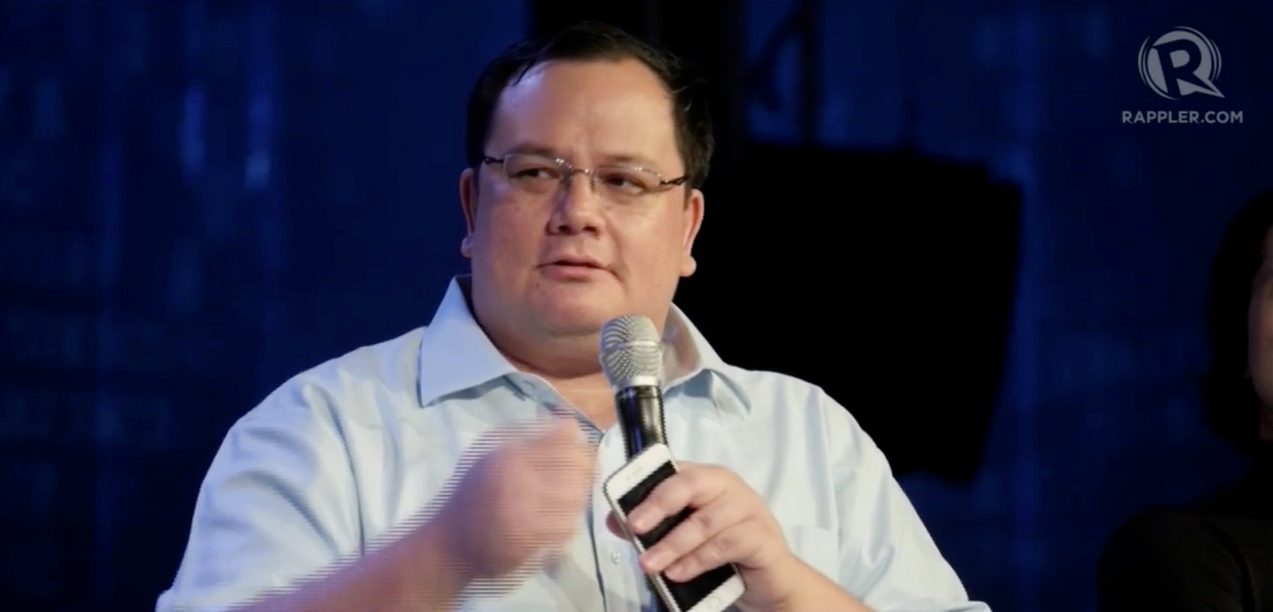SUMMARY
This is AI generated summarization, which may have errors. For context, always refer to the full article.

MANILA, Philippines – Running after corrupt officials will be more effective if the government, public, and technology come together.
Commission on Audit (COA) Chairman Michael Aguinaldo said this, as he shared how the agency is partnering with people on the ground to fight corruption.
One of the ways COA does this is through its “citizen participatory audit,” which allows ordinary Filipinos to join auditors on certain audit work. This method could make an audit more credible, he added.
“It’s really a transparency mechanism so that when auditors do work in certain types of audit, may mga kasamang (there are) private citizens so they can also see what’s going on. Minsan may sinasabi na binabayaran din auditor para ‘di na lang tingnan o ireport (There are allegations that the auditor is being paid just so he or she could no longer investigate or report), so this is one way to address it,” Aguinaldo said during Rappler’s Social Good Summit on Saturday, September 24.
Citing as example, Aguinaldo shared how ordinary citizens and civil society helped the agency check projects under the farm-to-market roads program.
“Civil society organizations and in some cases, farmers themselves, they’ve been going out and measuring these roads. They check if the construction is right. They use a stick and walk the entire length of the road and it actually measures the road,” he said.
Social media, technology
These groups and farmers, he said, also use the mobile application called MyTrack to plot road locations and lengths.
“Nakikita saan ginawa ‘yung kalye. In some cases, bakit kulang ng 200 meters? ‘Di naman kakasuhan agad, you have to ask why is it short of 200 meters? How much was paid for it?” he said.
(Where the road was built can be seen. In some cases, why is it short of 200 meters? No immediate cases will be filed, you have to ask why is it short of 200 meters? How much was paid for it?)
COA also relies on citizens’ reports through Facebook, the most common social media platform in the Philippines. While he admitted that the use of such platform is not yet fully tapped, Aguinaldo encouraged the public to report questionable projects to COA.
“Now, here’s what we’re working on… Let’s say roads built in barangays, or building, bridge, school, any citizen should be able to take a picture of that road, building, bridge, or school, as it’s being built and they can post it in some form of social media so people could see,” Aguinaldo said.
This, he said, allows people to actually witness and check the progress of construction projects.
“Everyone can now see that as of September 24, ito itsura (this is how it looks like), September 30, this is how it looks like. May (There’s) progress and people are actually monitoring it,” he added.
He suggested that the Department of Public Works and Highways participate in the planned program. It is the DPWH, after all, that oversees construction of national roads and bridges.
The DPWH, he said, could manage the central Facebook account where complaints are to be sent. – Rappler.com
Add a comment
How does this make you feel?
There are no comments yet. Add your comment to start the conversation.